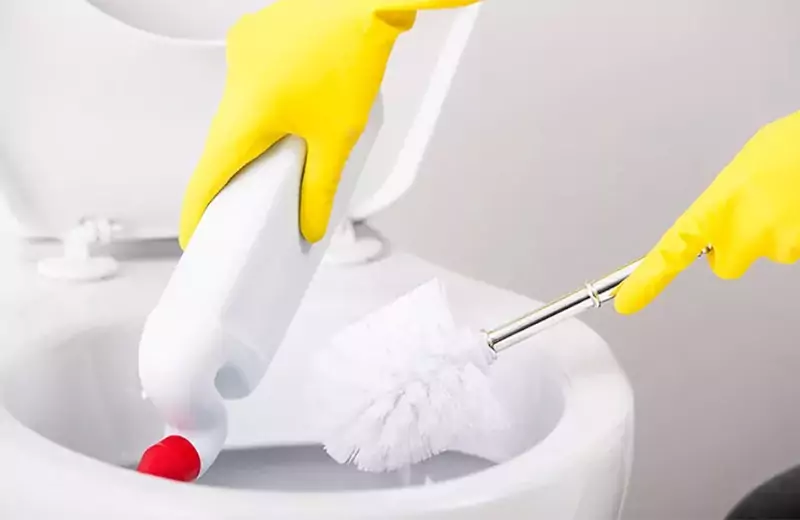A lot depends on the details. There are little things that you may not think about, but they immediately catch the eye of strangers. A good housewife will never lose face, so dust, dirt, plaque – all this has no chance in your home. Everything should be perfect – from the rug in the hallway to the sink in the bathroom. Particular attention should be paid to plumbing fixtures – plaque forms on them for various reasons and greatly spoils the appearance of the interior. And if you inherited an apartment from previous tenants who were not very clean, then old marks can be very persistent. Today we will talk about ways to remove plaque from the toilet using various available means.
Why does plaque form on plumbing fixtures?
The most common reason for the formation of plaque on plumbing fixtures is the quality of water, which has numerous impurities. And before you start dealing with deposits, you need to analyze this situation and think about how to prevent it from happening again. The fact is that if you deal with the plaque or even change the plumbing, it can happen again. So you should think about how to fix this. High-quality filters can partly solve this problem. Coupled with regular preventive cleaning, yellow plaque will not have the opportunity to ruin your mood again.
In addition to water quality, the condition of the plumbing system can cause the formation of deposits. If the water main is old, then the water will contain rust impurities – they color the water. You may not see them at first glance, but constant contact with the surface leads to the settling of particles and the formation of plaque.
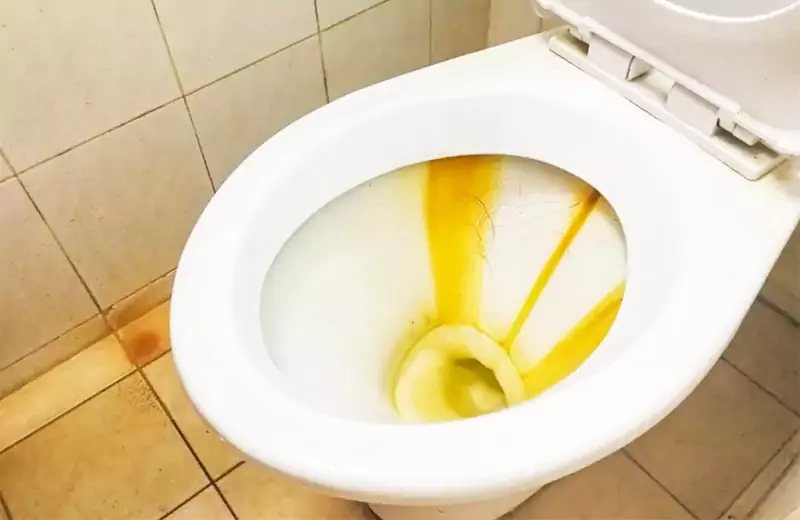
The reason for the formation of unsightly marks may be careless use of the toilet. This happens especially often in families with small children who do not know how to use the flush correctly. In this case, a yellow-brown coating of urinary stones with an unpleasant odor is formed, and the deposits themselves can be a source of harmful bacteria.
Before talking about which cleaning methods are most effective in combating plaque, it must be noted that any type of plaque must be dealt with immediately, preventing it from gaining a foothold on the surface. Regular cleaning and preventive measures will help get rid of the problem without the use of mechanical cleaning agents. Any abrasive means damages the surface of the ceramics, and this leads to the fact that the dirt becomes more firmly fixed and becomes resistant.
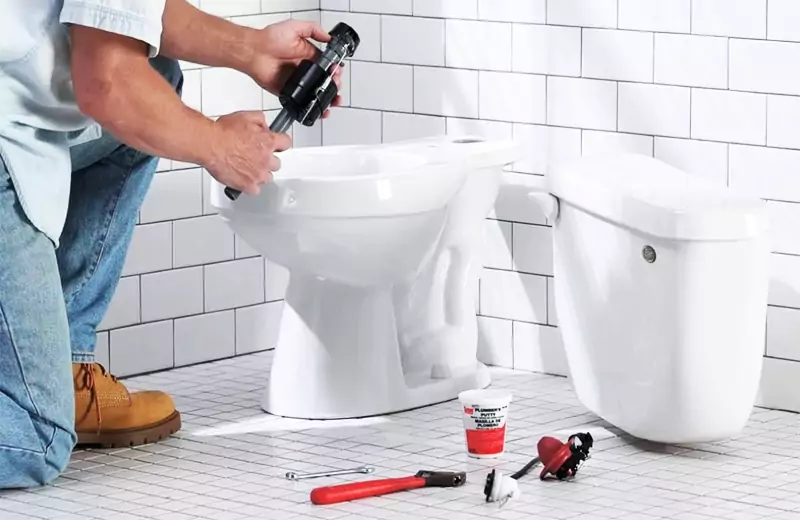
How to remove limescale from plumbing fixtures
Limescale is the result of very hard water. Numerous impurities, like heavy particles, settle on the ceramics and stick to it, forming an uneven, loose surface. If you waste time and do not remove this plaque, it petrifies due to the salt content and becomes rock-hard, and this is very difficult to cope with without an abrasive. So, what folk methods can be used, and how to wash off limescale?
Abrasives
As already mentioned, abrasive is a last resort. Its use is undesirable since such products leave scratches on the surface of smooth ceramics. Even microscopic damage invisible to the eye becomes the basis for the development of bacteria and the formation of persistent deposits.
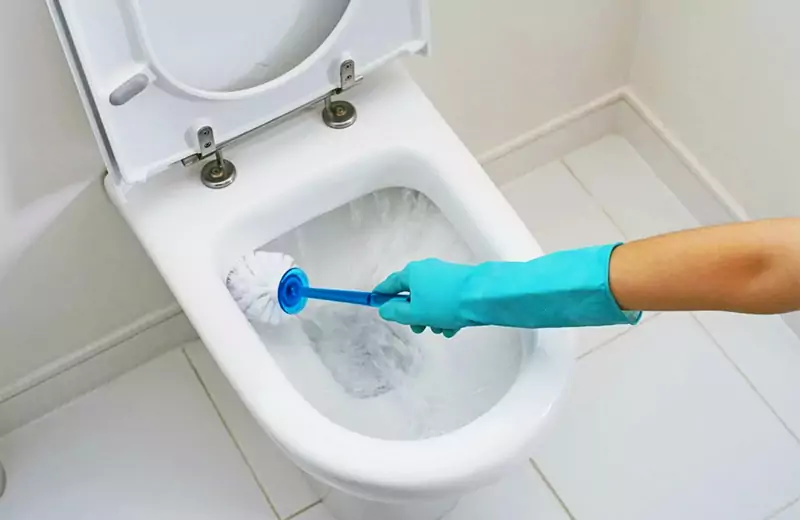
Alkaline Compounds
Alkaline compounds work well with lime deposits. They are often used to clean sewer pipes. They can dissolve salt particles without mechanical impact. But there are some nuances. For example, if you have plastic plumbing fixtures, then it is better to avoid such aggressive chemicals. Plastic toilets are often used in dry closets in the country. Caustic alkali, like acid, can hopelessly damage the surface of even hard plastic.
To use chemical alkaline solutions, you must first moisten the contaminated areas inside with them and leave them for a while. Ideally, overnight. Afterward, all that remains is to wash the almost-dissolved plaque with a brush and rinse with water. There is another option – to prevent the alkali from flowing down the smooth walls of the toilet, you can apply the product to a cloth or paper napkin and cover the plaque with it, and then after a couple of hours also clean and rinse with water.
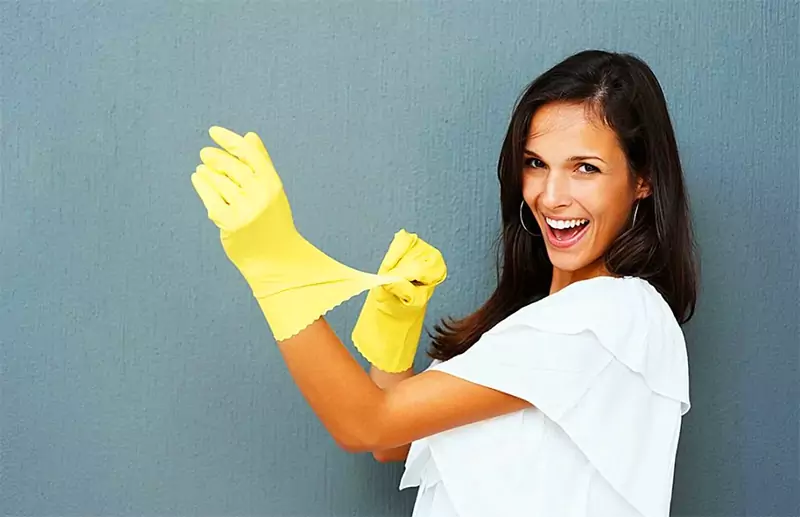
Acid
Various acids are used to clean limescale. For example, the most common household is acetic acid. It is poured into the toilet overnight and left with the lid closed. The next day you need to clean it with a brush and rinse several times with clean water. If you did not achieve what you wanted the first time, repeat the procedure.
Acetic acid is inferior in its effect to hydrochloric acid, so there are products for cleaning pipes and toilets based on it. But remember – it should never be used if you have plastic pipes. And even if the sewer pipes are cast iron or metal, you should not get carried away with this method, because hydrochloric acid can provoke the active development of rust. For treatment, a 33 percent solution is used – it is quickly sprayed over the surface of the toilet with a spray bottle or from a bottle with a thin spout. The waiting time during treatment is no more than 20 minutes, after which you need to thoroughly rinse the surface several times with clean water.
Chlorine
Chlorine-based products do an excellent job of killing bacteria. You can use special formulations, or you can use the usual “Whiteness”, which very conveniently began to be produced in gel form. “Whiteness” is applied to the surface for several hours and then the deposits are removed with a brush and washed off with water. Acrid chlorine fumes can harm the respiratory system, so you should only work with this composition wearing a protective mask and gloves.
Soda
This is an unusual type of remedy. But he also has a right to exist. The most universal is Coca-Cola.
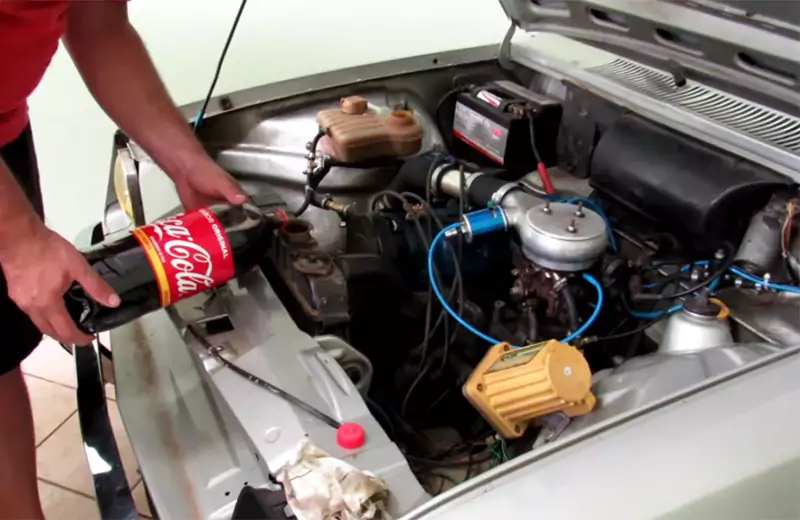
So it also copes well with the cola coating. The secret to the effects of soda is the presence of a large amount of citric acid. Coke is poured into the toilet overnight and then cleaned as usual.
Electrolyte
If your family has a car, then you are probably the happy owner of a universal remedy for plaque and scale – electrolyte. Just one glass into the toilet bowl, distributing it along the walls, waiting 15 minutes – and everything will work out. Just remember that this method is not compatible with plastic pipes.
How to remove rust deposits on plumbing fixtures
Limescale has a grayish tint, but if you find red stains, then it’s a matter of rust. So, how to clean a toilet from rust.
Acidic compounds
Rust is afraid of acid, and here you can use all possible arsenal. You should start with orthophosphoric acid – half a glass of a 7 percent solution is enough to remove traces of rust in 15 minutes.
Another excellent composition for removing old rust is a mixture of a tablespoon of baking soda and a glass of vinegar. You will instantly get a rich foam that needs to be applied to rust stains.
